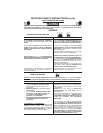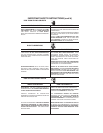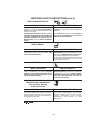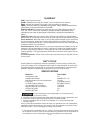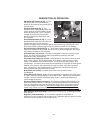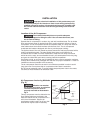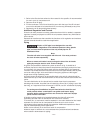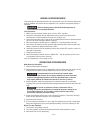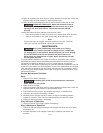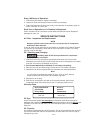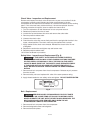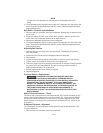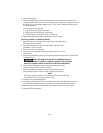
11-ENG
1. Refer to the Service Instructions in this manual for the specific oil recommended
for use in your air compressor unit.
2. Remove the oil fill plug.
3. Fill the crankcase. The oil level should be even with the top of the fill hole and
must not be allowed to be lower than 3/8" from the top (6 threads) at any time.
4. Replace the oil fill plug and tighten securely.
Additional Regulators and Controls
Since the air tank pressure is usually greater than that which is needed, a separate
regulator is usually employed to control the air pressure ahead of any individual air
driven device.
Separate air transformers that combine the functions of air regulation and moisture
and dirt removal should be used where applicable.
Piping
Plastic or PVC pipe is not designed for use with
compressed air. Regardless of its indicated pressure rating, plastic
pipe can burst from air pressure. Use only metal pipe for air
distribution lines.
Note
The shut-off valve is not supplied with this unit. You must purchase
the shut-off valve separately.
Note
Where a remote air intake is used, enlarge the size of the air intake
piping by one pipe size for each 10 feet of length.
A typical compressed air distribution system as shown in fig. 5 should be of
sufficient pipe size to keep the pressure drop between the supply and point of use
to a minimum. All pipes and fittings used must be certified safe for the pressures
involved. Pipe thread lubricant must be used on all male pipe threads, and all joints
are to be made up tight, since small leaks in the piping system are the largest
single cause of high operating costs.
All piping should be sloped to an accessible drain point and all outlets should be
taken from the top of the main distribution air line so that moisture cannot enter the
outlet.
The main distribution air line should not be smaller than the air compressor
discharge valve outlet. A smaller line will restrict the flow of air. If piping is over 100
feet long, or if required air flow will exceed 15 SCFM, use 3/4" scheduled 40 piping.
Note
For underground installation, bury air lines below the frost line and
avoid pockets where condensation can gather and freeze. Apply
pressure before underground lines are covered to make sure all pipe
joints are free from leaks.
A flexible coupling needs to be installed between the shut-off valve (sold
separately) and the main air distribution line to allow for vibration.
To remove dirt, oil, and water, install a separator in the main distribution line. Install
separator 5 to 6 feet from air compressor to allow the air to cool to room
temperature before passing through the separator. Additional separators or filters
may be used depending on the application.
Water occurs naturally in air lines as a result of compression.
Moisture vapor in ambient air is concentrated when pressurized and condenses
when cooled in downstream air piping.



